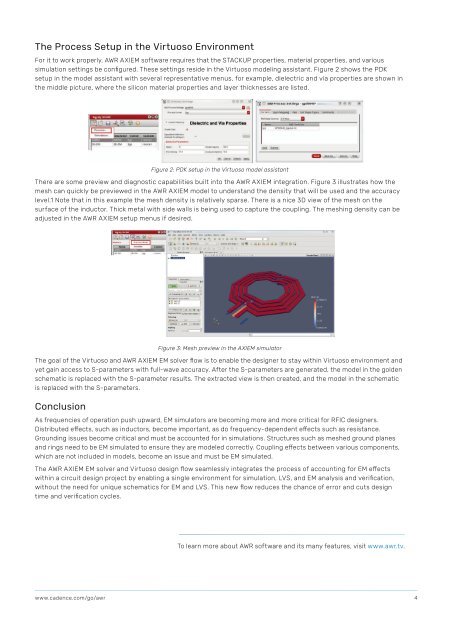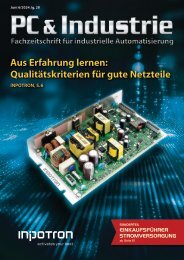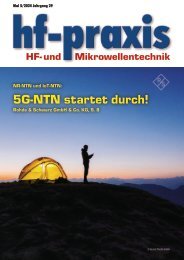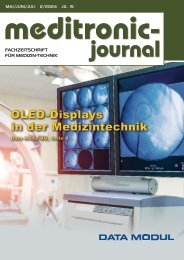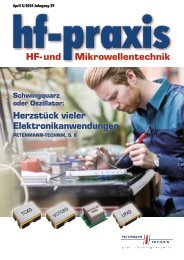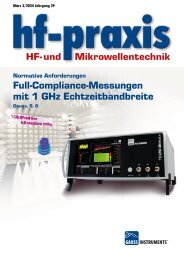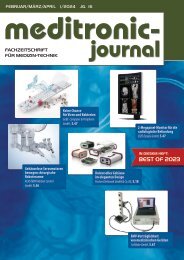10-2020
Fachzeitschrift für Hochfrequenz- und Mikrowellentechnik
Fachzeitschrift für Hochfrequenz- und Mikrowellentechnik
Erfolgreiche ePaper selbst erstellen
Machen Sie aus Ihren PDF Publikationen ein blätterbares Flipbook mit unserer einzigartigen Google optimierten e-Paper Software.
The Process Setup in the Virtuoso Environment<br />
For it to work properly, AWR AXIEM software requires that the STACKUP properties, material properties, and various<br />
simulation settings be configured. These settings reside in the Virtuoso modeling assistant. Figure 2 shows the PDK<br />
setup in the model assistant with several representative menus, for example, dielectric and via properties are shown in<br />
the middle picture, where the silicon material properties and layer thicknesses are listed.<br />
Figure 2: PDK setup in the Virtuoso model assistant<br />
There are some preview and diagnostic capabilities built into the AWR AXIEM integration. Figure 3 illustrates how the<br />
mesh can quickly be previewed in the AWR AXIEM model to understand the density that will be used and the accuracy<br />
level.1 Note that in this example the mesh density is relatively sparse. There is a nice 3D view of the mesh on the<br />
surface of the inductor. Thick metal with side walls is being used to capture the coupling. The meshing density can be<br />
adjusted in the AWR AXIEM setup menus if desired.<br />
Figure 3: Mesh preview in the AXIEM simulator<br />
The goal of the Virtuoso and AWR AXIEM EM solver flow is to enable the designer to stay within Virtuoso environment and<br />
yet gain access to S-parameters with full-wave accuracy. After the S-parameters are generated, the model in the golden<br />
schematic is replaced with the S-parameter results. The extracted view is then created, and the model in the schematic<br />
is replaced with the S-parameters.<br />
Conclusion<br />
As frequencies of operation push upward, EM simulators are becoming more and more critical for RFIC designers.<br />
Distributed effects, such as inductors, become important, as do frequency-dependent effects such as resistance.<br />
Grounding issues become critical and must be accounted for in simulations. Structures such as meshed ground planes<br />
and rings need to be EM simulated to ensure they are modeled correctly. Coupling effects between various components,<br />
which are not included in models, become an issue and must be EM simulated.<br />
The AWR AXIEM EM solver and Virtuoso design flow seamlessly integrates the process of accounting for EM effects<br />
within a circuit design project by enabling a single environment for simulation, LVS, and EM analysis and verification,<br />
without the need for unique schematics for EM and LVS. This new flow reduces the chance of error and cuts design<br />
time and verification cycles.<br />
To learn more about AWR software and its many features, visit www.awr.tv.<br />
www.cadence.com/go/awr<br />
4


